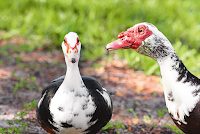HILO MUSEUM OFFERS WORLD CLASS STUDY OF SETTLING OF HAWAII, CRAFTS, ART, CULTURE AND A HISTORIC HOME BUILT BY MISSIONARY TEACHERS
 |
| Murals, paintings and expertly written commentary tell the fascinating story of the settlement of Hawaii. |
STORY By CHRISTENE MEYERS
PHOTOS By BRUCE KELLER
PHOTOS By BRUCE KELLER
 |
| New England born Lymans brought their "Cape Cod" style architecture to build in Hawaii. |
Located in Hilo, on "the Big Island" of Hawaii, this treasure is Smithsonian-affiliated and the islands' only museum of natural and cultural history.
Its large collection of intriguing artifacts is displayed throughout more than 20,000 square feet of open, airy and well designed galleries. Expertly curated and sometimes surprising exhibits range from a beautifully illustrated history of the islands' settlement to a tour of the home next door, built by New England missionaries and teachers, David and Sarah Lyman in 1839.
THE NICELY restored Mission House is home to both furniture owned and built by the Lymans and other period pieces acquired by the museum which achieved status with both the State and National Registers of Historic Places. We admired lovely hand-crafted furniture, tools, household items, and artifacts used by the Lymans and other early missionary families.
 |
| The Lyman house is on the State and National Registers of Historic Places and an important artifact of the Museum. |
The much larger Lyman Museum building, next door to the Mission House, was constructed in 1971. We admired its superb collection of artifacts and natural history exhibits -- displayed in an impressively large and open space. A handsome gift shop offers handmade Hawaiian souvenirs -- classy, not airport kitsch.
VISITORS TOURING the two facilities can see the old Mission House and life as it was 150 years ago, then go next door to inspect immersive exhibits on a range of Hawaiian natural history and culture. Through our Lyman Mission House guide, Jan, we enjoyed a glimpse into the life of the Lymans Lyman, who sailed 5,000 miles from New England in 1832 to build the island's oldest standing wood structure.
 |
| Exquisite feather work is on show. |
WE SPENT a good share of our afternoon visit in the museum's newly renovated Heritage Gallery which studies Polynesian settlement and the life of these early Hawaiian people. We studied nicely displayed tools and implements crafted from native materials so these inventive people could farm, fish, build canoes and structures, grow crops, prepare and serve food, fashion weapons and adornments, and create clothing, coverings, and containers.
 |
| This pair of Muscovy ducks kept watch outside the museum. |
THE SHELLS, rocks and feather work are stunning. So is an artistic exhibit on Hawaii's famous waterfowl.
The museum involves the community in learning, enrichment projects and guest artists, offering a range of educational programs from special lectures and talks to hands-on workshops on Hawaiian skills and crafts. A favorite exhibit of locals is "Lei Hulu" featuring traditional Hawaiian feather work, exquisitely done. Regional exhibits also draw attention. “Sasana: The Burma Portfolio,” features images of the Burmese people and their land, showcased the work of a noted Hawaii-based photographer.
 |
| Bruce Keller looks to the horizon in front of a colorful mural at Lyman Museum, which offers a fascinating immersion in the complex culture of Hawaii. |
THE GALLERY spends time on their spiritual beliefs and social relationships and diplomatically studies the influences of "Agents of Change," a variety of early European explorers, whalers, traders, missionaries and people from the mainland. All helped shape the islands' government, land use, economy and education.
 |
| Tools are nicely displayed with commentary on their use and how they were made. |
WE ENJOY this aspect of our frequent Hawaii visits. It's an appealing "melting pot," a multi-cultural mecca. The museum notes these important contributors: Japanese, Chinese, Filipino, Portuguese and Korean immigrants who worked the sugar plantations, contributed to an evolving language and brought new foods and music. That exotic blend shaped what Hawaiian people consider “local."
HAWAII'S POLITICAL development is also carefully analyzed. The Monarchy's early
 |
| The museum's many and varied exhibits include this lovely three-dimensional display on Hawaii's waterbirds. |
THE MUSEUM and next-door home are popular with schools and students are welcome. Our guide, Jan, noted that this is appropriate since high school boys crafted some of the furniture in the home. A highlight of the gallery is the "Kīpuka," an interactive learning space where students enjoy hands-on activities: Hawaiian kapa and tattoo design, mat plaiting, storytelling through hula, chant, petroglyphs, and oral legends. They take home their artwork -- learning traditional techniques and an appreciation for the rich culture inspiring the artforms.
Admissions are surprisingly low -- only a few dollars, with locals getting a price break.
www.lymanmuseum.org
 |
| The seductive charms of La Casa del Zorro await you, a desert hotel offering a peaceful get-away with all the amenities of a resort or big-city property. |
UP NEXT: La Casa del Zorro is a stately yet relaxed hotel in the desert near Borrego Springs, Calif.


No comments:
Post a Comment